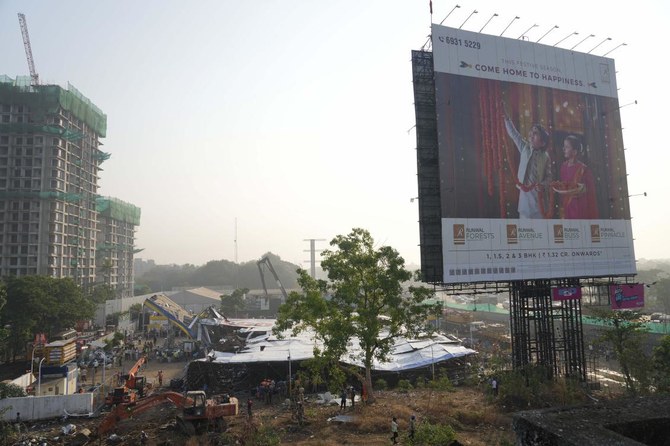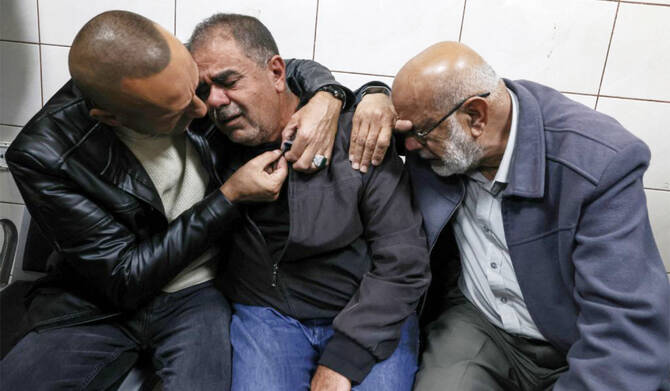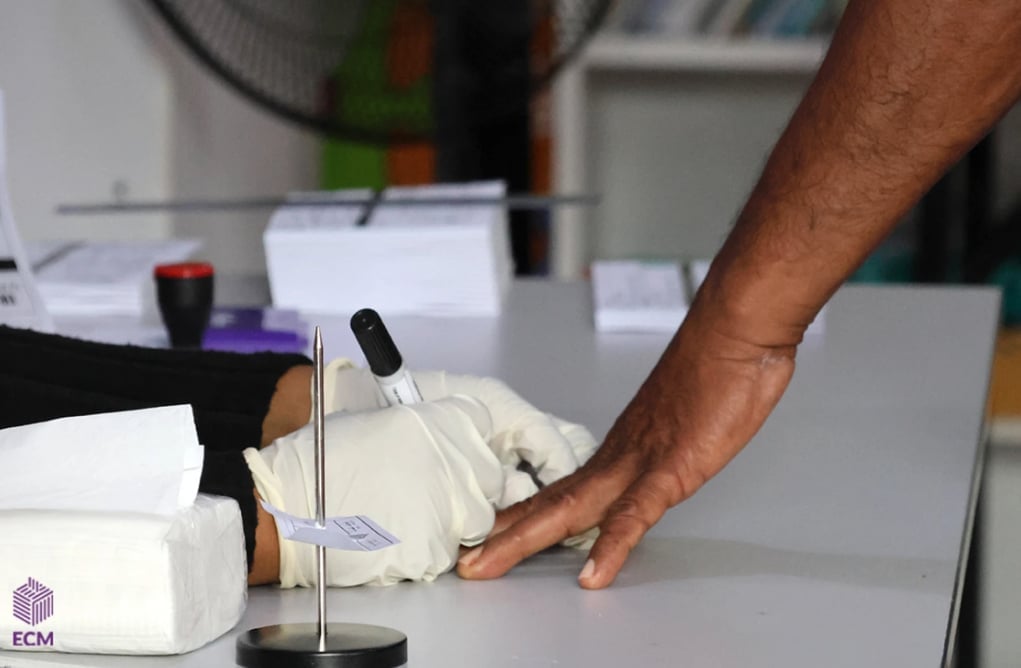In a shocking turn of events, Mumbai, India's bustling financial capital, was struck by tragedy as a massive billboard collapsed during a thunderstorm, claiming at least 14 lives and leaving 75 others injured. The incident occurred in the eastern suburb of Ghatkopar on Monday evening, sending shockwaves through the city.
Videos circulating online depicted the towering hoarding swaying ominously in the wind before ultimately crashing down onto nearby houses and a fuel station, causing devastation in its wake. The sudden collapse brought traffic to a standstill and disrupted flights at Mumbai airport, amplifying the chaos and confusion engulfing the area.
Mumbai's municipal corporation (BMC) swiftly responded to the catastrophe, dispatching emergency services to the scene and coordinating rescue efforts. At least 75 injured individuals were rushed to hospitals for treatment, with 31 already discharged at the time of reporting. However, concerns lingered as reports indicated that dozens could still be trapped beneath the debris.
Investigations into the incident revealed alarming lapses in safety protocols, as the agency responsible for the billboard had erected the structure without proper authorization from the BMC. The colossal hoarding, spanning approximately 1,338 square meters (14,400 square feet), far exceeded the permissible size limits, posing a significant risk to public safety.
In response to the tragedy, the BMC issued directives for the immediate removal of all unauthorized hoardings across the city. Maharashtra's Chief Minister, Eknath Shinde, emphasized the need for comprehensive structural audits to identify and address potential hazards, pledging to prevent similar accidents in the future.
As rescue operations continued into the night, the challenges mounted for emergency responders grappling with the complex aftermath of the collapse. Approximately 25 individuals, along with several vehicles, remained trapped beneath the wreckage, compounding the urgency of the situation.
Despite the formidable obstacles, teams comprising fire services, police, and disaster response units persevered in their rescue efforts, navigating through the perilous conditions. However, the presence of a fuel pump at the site hampered progress, restricting the use of gas cutters and prolonging the arduous task of extricating survivors.
As Mumbai grapples with the aftermath of this tragic incident, questions loom over the city's infrastructure and safety standards, underscoring the pressing need for robust regulatory measures and stringent enforcement to avert future calamities.
Videos circulating online depicted the towering hoarding swaying ominously in the wind before ultimately crashing down onto nearby houses and a fuel station, causing devastation in its wake. The sudden collapse brought traffic to a standstill and disrupted flights at Mumbai airport, amplifying the chaos and confusion engulfing the area.
Mumbai's municipal corporation (BMC) swiftly responded to the catastrophe, dispatching emergency services to the scene and coordinating rescue efforts. At least 75 injured individuals were rushed to hospitals for treatment, with 31 already discharged at the time of reporting. However, concerns lingered as reports indicated that dozens could still be trapped beneath the debris.
Investigations into the incident revealed alarming lapses in safety protocols, as the agency responsible for the billboard had erected the structure without proper authorization from the BMC. The colossal hoarding, spanning approximately 1,338 square meters (14,400 square feet), far exceeded the permissible size limits, posing a significant risk to public safety.
In response to the tragedy, the BMC issued directives for the immediate removal of all unauthorized hoardings across the city. Maharashtra's Chief Minister, Eknath Shinde, emphasized the need for comprehensive structural audits to identify and address potential hazards, pledging to prevent similar accidents in the future.
As rescue operations continued into the night, the challenges mounted for emergency responders grappling with the complex aftermath of the collapse. Approximately 25 individuals, along with several vehicles, remained trapped beneath the wreckage, compounding the urgency of the situation.
Despite the formidable obstacles, teams comprising fire services, police, and disaster response units persevered in their rescue efforts, navigating through the perilous conditions. However, the presence of a fuel pump at the site hampered progress, restricting the use of gas cutters and prolonging the arduous task of extricating survivors.
As Mumbai grapples with the aftermath of this tragic incident, questions loom over the city's infrastructure and safety standards, underscoring the pressing need for robust regulatory measures and stringent enforcement to avert future calamities.


















